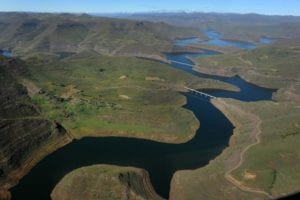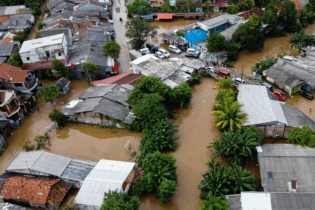The Senqu Bridge construction contract under Phase II of the Lesotho Highlands Water Project (LHWP) went out to tender on 04 March 2021.
At a length of 825m and almost 100m high, the Senqu Bridge will be the first extradosed bridge in Lesotho, which combines both prestressed box girder and cablestayed elements in an efficient design. This is the largest of the three bridges that will be constructed under Phase II to span the Polihali reservoir. The Polihali reservoir in the valleys and tributary catchments of the Senqu and Khubelu rivers, which will be formed by the construction of the Polihali Dam, will have a surface area of approximately 5 000 hectares. Besides the three major bridges, the restoration of access across the reservoir also necessitates the construction of new approach road sections to the bridges that tie into the existing A1 road. The A1 is the main road between the Mokhotlong district in the north-east of the country and the capital, Maseru. “Experience and expertise are crucial in delivering a sophisticated, technically challenging project of this kind, which will be one of the few for the LHWP and Lesotho. Based on our experience with other major works tenders, we are confident that our call for tenders will attract the right mix of expertise and experience,” states Tente Tente, LHDA’s Chief Executive. “With its unique features, the Senqu Bridge will not only form part of the safe and efficient road infrastructure network constructed under Phase II, but will be a major tourist attraction contributing to long-term benefits in stimulating sustainable economic growth,” Tente adds.Due to the deep valley and the inaccessible nature of the area where the Senqu Bridge will be built, the deck of the bridge will be constructed incrementally from both abutments. An in-situ segment midspan of the centre span will connect the two parts to form a continuous deck.
This construction method will minimise disturbance to the surrounding area and increase workers’ safety. It is envisaged that a steel launching nose will not be required. The pier shape is ideal to be constructed with sliding formwork. Work on the bridge design started in 2018, led by Zutari, formerly Aurecon Lesotho. Zutari also designed the Mabunyaneng and Khubelu bridges. Zutari will also supervise the construction of the three bridges. Phase II of the the Lesotho Highlands Water Project entails construction of the Polihali Dam, 38km long transfer tunnel, the associated infrastructure and hydropower component. It builds on the successful completion of Phase I in 2003. LHWP delivers water to the Gauteng region of South Africa and utilises the water delivery system to generate hydroelectricity in Lesotho. Phase II will increase the current supply rate of 780 million cubic meters per annum incrementally to more than 1 270 million cubic metres per annum. At the same time, it will increase the electrical energy generated in Lesotho. This is a further step in the process of securing an independent energy source to meet Lesotho’s domestic requirements.







